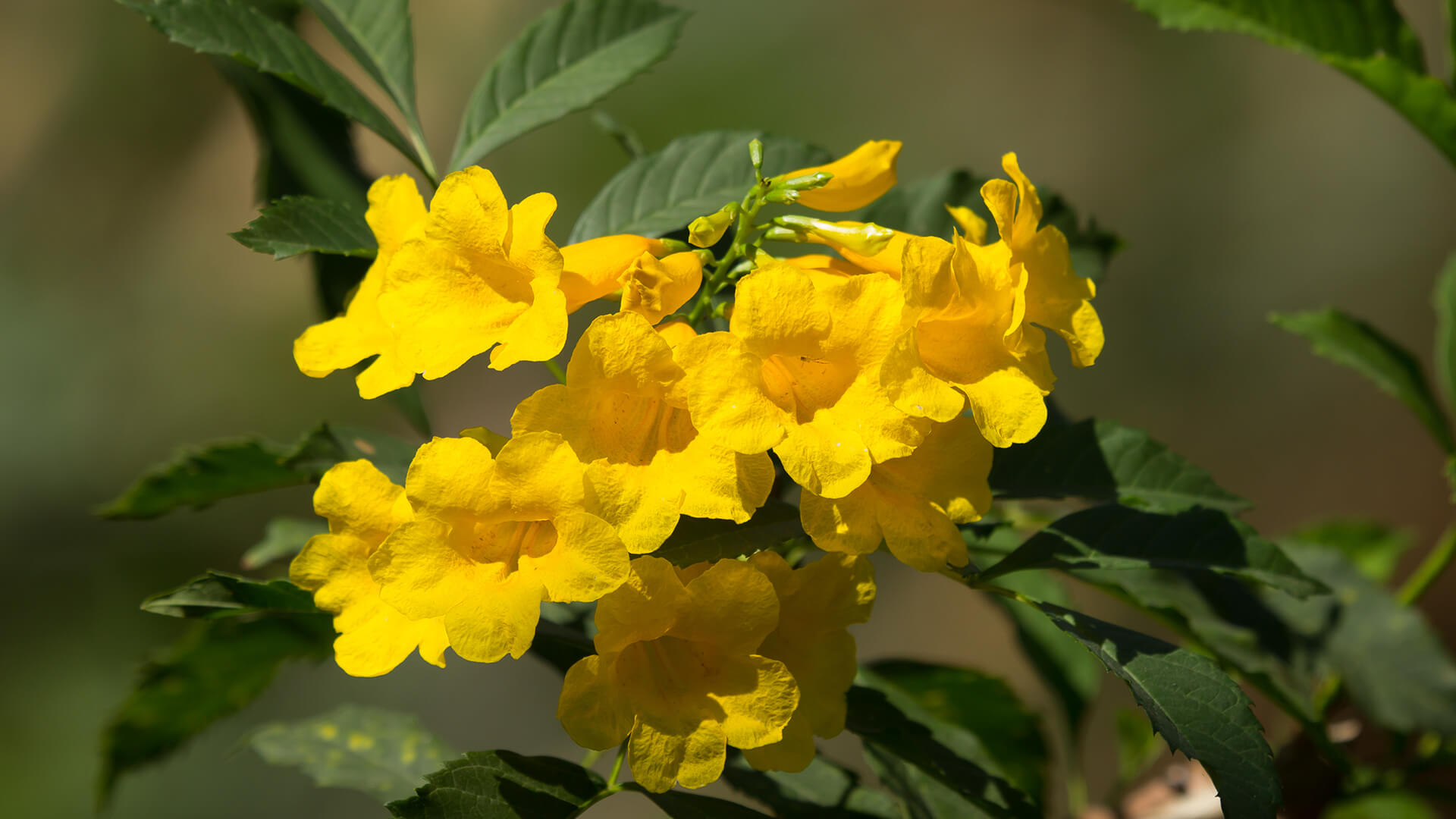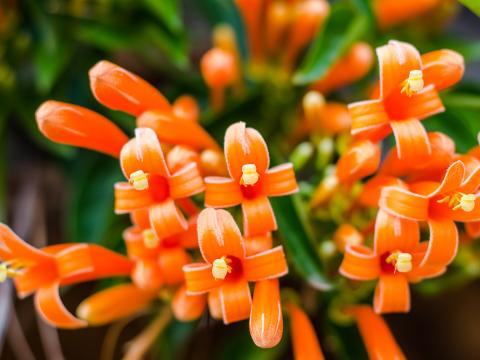Yellow Bells
- Division: Tracheophyta
- Class: Magnoliopsida
- Order: Lamiales
- Family: Bignoniaceae
- Genus: Tecoma (formerly Stenolobium)
- Species: stans
OVERVIEW
Butterflies flit, hummingbirds zoom, and bees buzz around the bright yellow blooms of this broadleaf, evergreen beauty. It hails from warm, dry forests and shrublands from Arizona and Texas through South America and the Caribbean. In some regions, people have used parts of the tree in herbal folk remedies. Where it’s native, you can expect to see bunches of yellow, trumpet-shaped flowers blossoming at just about any time of the year.
CHARACTERISTICS
A bright green, densely branched tree that can reach more than 20 feet (12 meters) tall and 12 feet (3.7 meters) wide, yellow bells can also be trained into smaller shrubs. Bark on the trunk is light brown to pale gray, and becomes rough and furrowed. Stems—four-angled in cross-section—bear pinnately compound leaves that are 4 to 10 inches (10 to 25 centimeters) long. Leaflets are pointed ovals with toothed edges, slightly hairy on the bottom.
Throughout the growing season, flowers grow in fragrant, showy clusters that hang at the tips and forks of branches. A flower cluster holds up to 50, 1- to 2-inch (3- to 6-centimeter) flowers. Each bright yellow, tubular blossom in the bunch bears both male and female parts. Flowers give way to 8-inch (20-centimeter), bean-like seedpods that eventually split and release flat, papery, winged seeds that are dispersed by wind.
CULTIVATION
If your garden provides full sun or limited shade and stays above about 28 degrees Fahrenheit, you should find yellow bells easy and rewarding to grow. Once established, it can handle high summer heat and drought. Although it thrives in neutral to slightly alkaline soil, it tolerates a wide variety of soil types, including sand and limerock. Yellow bells is considered a “utility-friendly” tree, and the only issue you’re likely to have with this low-maintenance champ is a bit of litter from the dry fruit.
Depending on how you trim it, you can grow your yellow bells as a tree or a large shrub. You can even cut this vigorous grower all the way to the ground, and see it rejuvenate in spring. (If you’re looking for a particularly compact form, check out T. stans var. angustata, which is not only shorter, but also more drought-, heat-, and cold-tolerant.)
CONSERVATION
In parts of Australia, Asia, Africa, and some Pacific islands, including parts of Hawaii and French Polynesia, yellow bells has naturalized. It can be found growing along waterways and roadsides, and in some places, it outcompetes native vegetation and becomes an invasive weed, transforming natural habitats and reducing biodiversity. In fact, it is listed as a noxious weed in parts of Australia.










